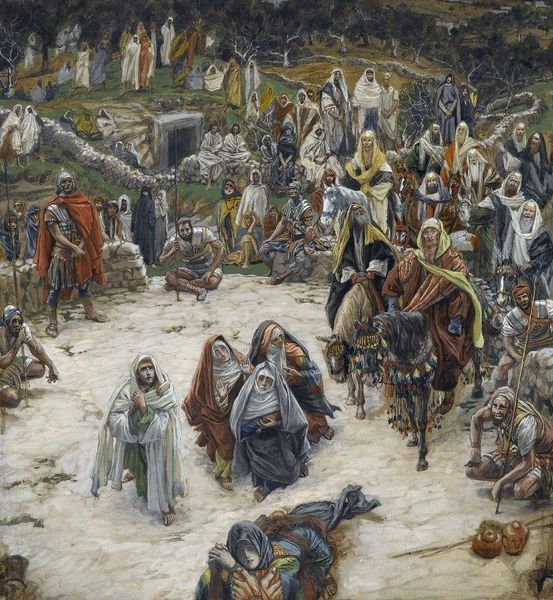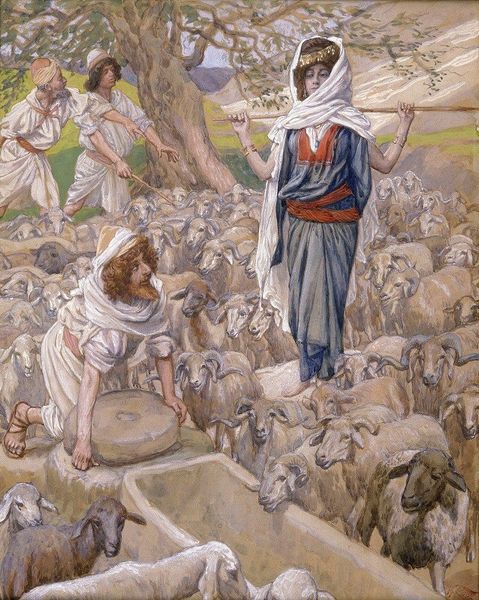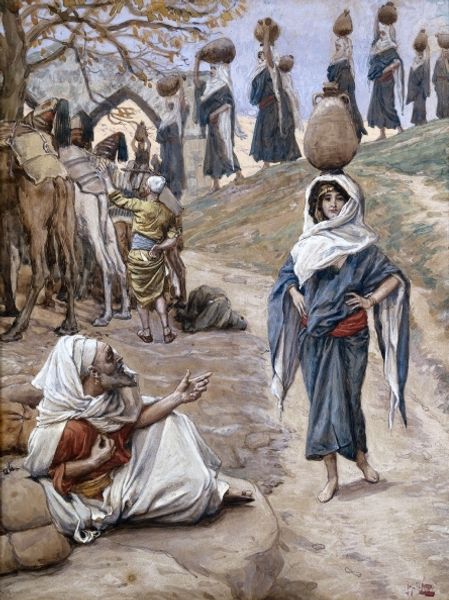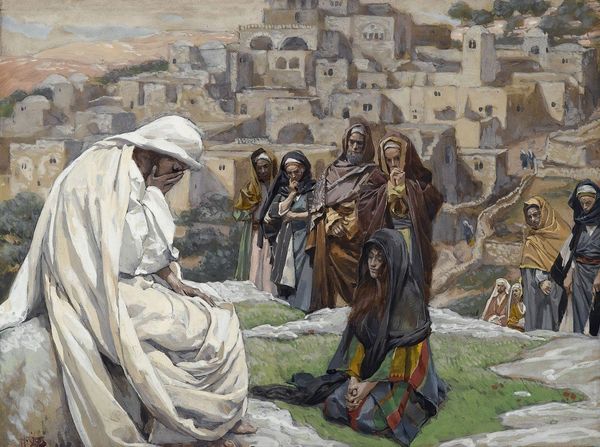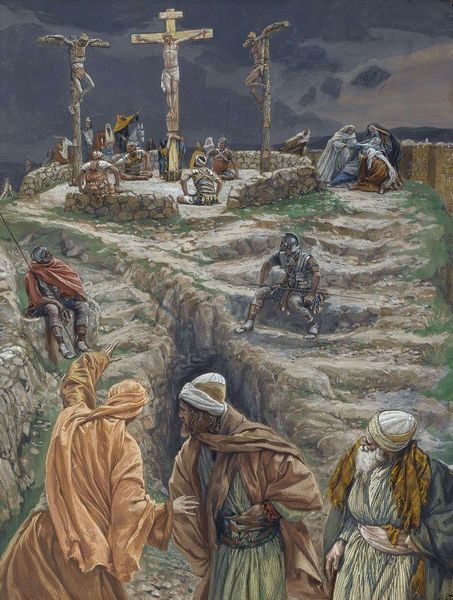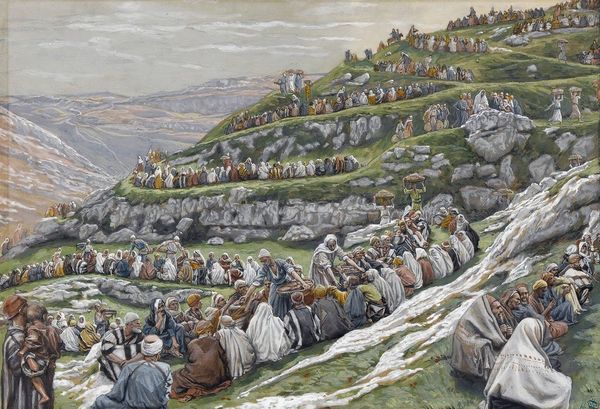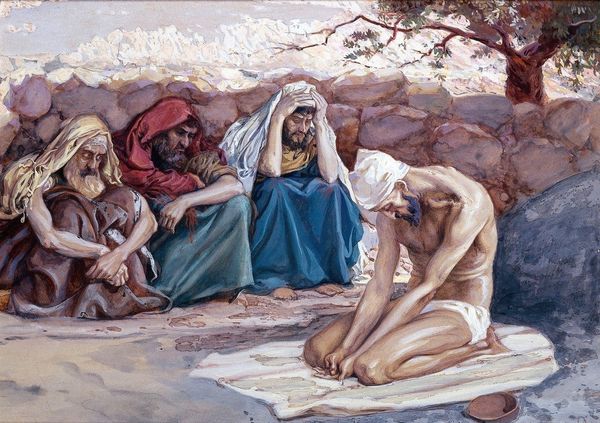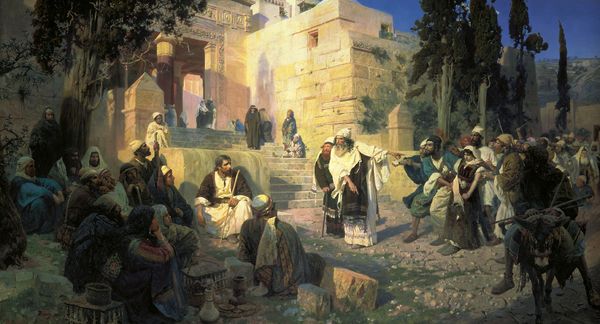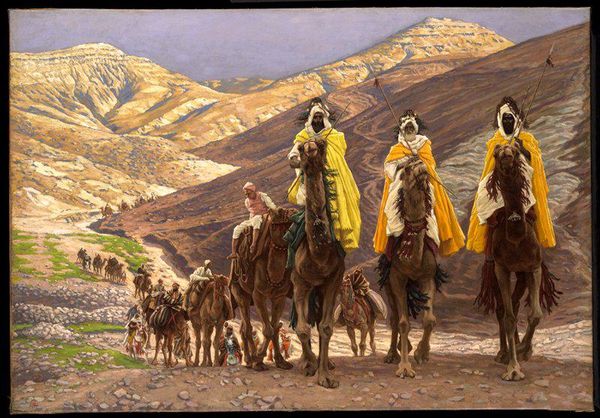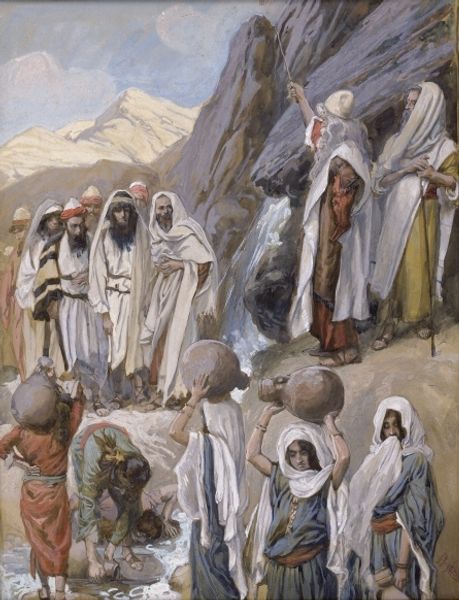
painting, oil-paint, impasto
#
narrative-art
#
painting
#
oil-paint
#
oil painting
#
impasto
#
group-portraits
#
history-painting
#
pre-raphaelites
#
academic-art
#
realism
Copyright: Public domain
Editor: So this is James Tissot’s *The Primacy of Saint Peter*, currently at the Brooklyn Museum. It’s an oil painting showing a group of figures in what looks like a rocky landscape. The composition has a very naturalistic feel, less staged than other history paintings I’ve seen. What catches your eye? Curator: I see a cluster of figures at the forefront, huddled together, seemingly in intense discussion. The most evocative part is the man with his hand to his head – perhaps he is in distress or questioning the divine authority. The symbolism is interesting to me - this huddle could represent uncertainty within community facing transition. What are they questioning, and what lasting effect would it have on them all? Editor: Transition? The composition and impasto create movement through a somewhat stagnant scene. Curator: Think about it this way: What visual cues, like the rocky landscape, might evoke feelings of instability or a challenging path forward for early Christians? Look also at their garments – seemingly ordinary rather than idealized robes. The figures appear vulnerable, conveying their emotions with sincerity. The setting provides depth and history of people in movement. Are there any other subtle hints suggesting spiritual depth? Editor: Yes, the group on the ridge. What is that about? Curator: Precisely. Perhaps the distant group signals continued support for the work on their earthly paths. Do you agree that the work reflects faith, doubt, introspection and the journey? Editor: I do. I see that Tissot is using symbolism to build a cultural narrative through realistic and natural depictions and visual cues. Curator: Exactly. This artwork reminds us that imagery doesn't merely depict, but that images shape beliefs across generations.
Comments
No comments
Be the first to comment and join the conversation on the ultimate creative platform.
